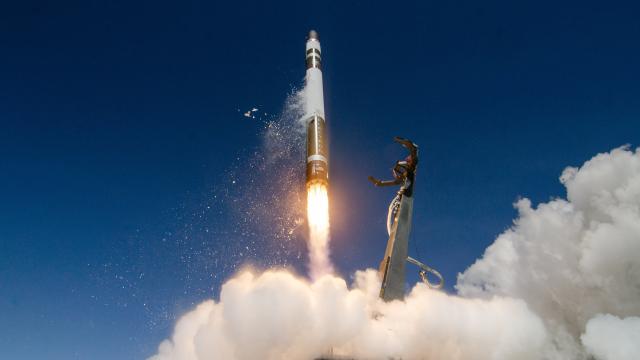A private aerospace company is preparing for the ultimate stunt in rocketry: attempting to catch a rocket mid-air as it returns to Earth from space using a large helicopter. The mission is scheduled to take off within a two-week window starting April 22.
Rocket Lab will launch its Electron rocket from New Zealand’s Māhia Peninsula, carrying 34 small satellites from commercial operators like Alba Orbital, E-Space, and Unseenlabs. But on its way back, the rocket booster hopefully won’t stick the landing, instead a helicopter will catch it mid-air with a customised Sikorsky S-92, a large twin engine craft normally used to transport oil and gas or for search and rescue operations, according to Rocket Lab.
How exactly do you snag a rocket booster mid-air? About two minutes after liftoff, Electron’s first stage, or its engine, will separate from the second stage, which will carry the payload to space. The first stage will start falling back towards Earth at a speed of about 8,047 km per hour, reaching temperatures of 4,352 degrees Fahrenheit.
The Electron booster will then deploy a parachute at an altitude of 13 km, and a second parachute at 6 km to really slow its speed down to 22 miles per hour. Meanwhile, the helicopter will be waiting in position, ready to snag the parachute line through a hook.
This stunt isn’t just about showing off, though. The recovery of the rocket booster is meant to facilitate its use for future launches, and catching the booster mid-air will avoid possible water damage to the hardware from falling into the ocean.
Rocket Lab has previously recovered three rocket boosters from the ocean, and those attempts helped inform the design of the Electron rocket so that it can withstand the harsh conditions of re-entering Earth’s atmosphere. The company has also performed multiple successful mid-air recoveries with replicas of the Electron booster.
“Trying to catch a rocket as it falls back to Earth is no easy feat, we’re absolutely threading the needle here,” Peter Beck, Rocket Lab founder and CEO, said in a statement. “But pushing the limits with such complex operations is in our DNA.”
SpaceX’s Falcon 9 rocket is the only other major rocket with a reusable booster. That rocket is designed to be able to fly 10 times, and has an automated landing sequence that allows the rocket booster to touch down on Earth on an offshore platform or a landing pad.
Rocket Lab wants to be the second company to use a reusable booster stage, although the Electron rocket is much smaller than the Falcon 9, standing at about 18.29 m tall while Falcon 9 hovers over it at 63.09 m.
